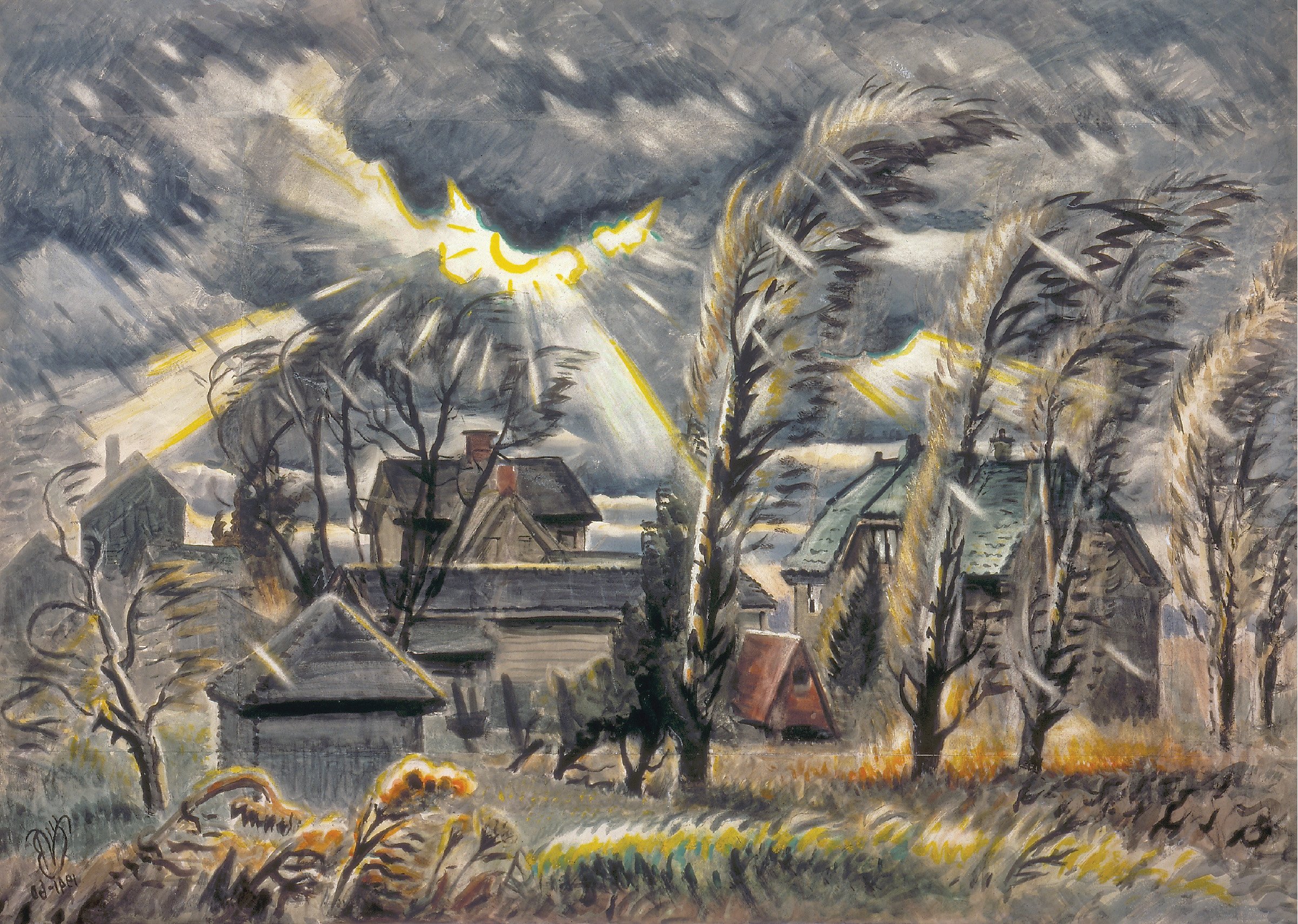december storm
Considered to be one of Charles E. Burchfield’s most important paintings, December Storm depicts sunlight bursting through storm clouds hovering over houses visible from the artist’s backyard in Gardenville, New York.
It represents the memory of a savage winter storm from Burchfield’s childhood, recalled during an equally ferocious storm in December 1941. Interestingly, Burchfield began the painting on December 6th, 1941, the day before the infamous attack on Pearl Harbor. In his words, Burchfield felt that “a violent storm … was about to break upon us.” The painting is seen as a reflection of the turbulence of the World War II era.
Charles E. Burchfield (1893-1967), December Storm, 1941-60; watercolor on joined paper mounted on board, 40.5 x 56 inches
It is known that Burchfield took solace in the music of Sibelius and Beethoven, finding through their compositions an optimism that the world would return to peace and faith in God. Burchfield found inspiration in the power and significance of such works as Beethoven’s Symphony No. 5 and “the Sibelius 5th Symphony (an act of Faith),” which was contemporaneous with World War I.
Spiritually rich, December Storm is Burchfield’s depiction of hope in the face of World War.
Late in his career, Burchfield considered himself to be a romantic painter. Following in the tradition of 19th-century Northern European romantic landscape painters such as Caspar David Friedrich, his paintings increasingly came to represent the philosophic challenges of the individual confronted by the immensity of the universe.
His work also embraced the principles of pantheism, a widespread belief system in the 19th and early 20th centuries in which God is identified with the universe itself. As one of Burchfield’s most profound paintings, December Storm can be read as an allegory for overcoming war, nature’s dynamism, spiritual conviction, and a visual equivalent to musical masterworks. It remains timeless.
Peter C. and Joan K. Andrews presented December Storm to Buffalo State College in 1964. When the Charles Burchfield Center was inaugurated in 1966, the gift became the cornerstone of the museum’s collection.
Today, Charles Burchfield’s master work is part of the permanant collection at the Burchfied Penney Art Center in Buffalo, New York.

